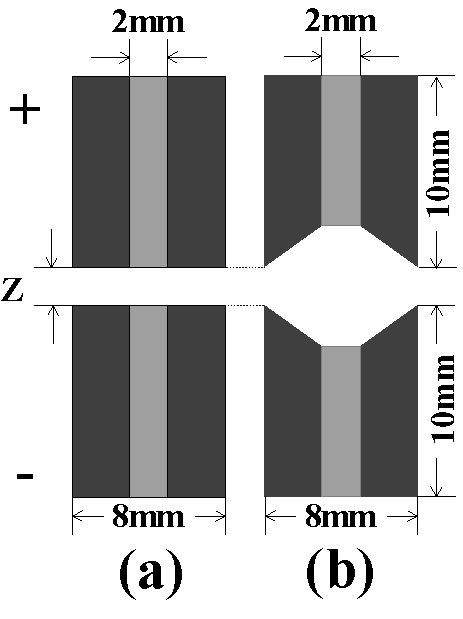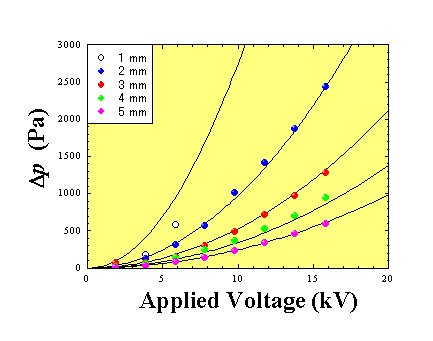|
|
Fig. 1. |
|
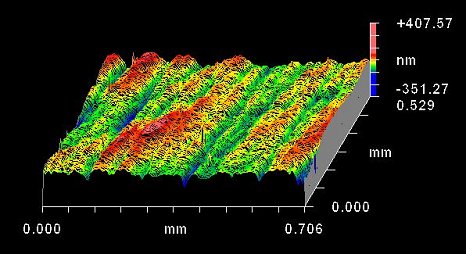 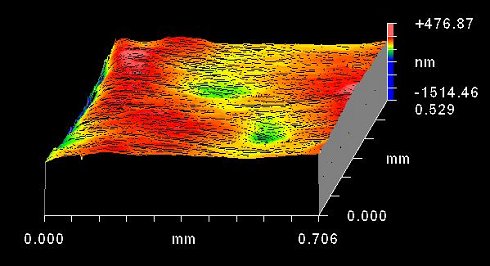 |
Fig. 2. Observations of electrode surface processed by (a) mechanical polishing (MP) and (b) chemical etching (CE). On the MP surface, sharp and steep scratches remain. In contrast, CE after fine polishing can make the surface smooth efficiently. The sharp scratching is almost removed on the surface. |
|
|
Fig. 3. dc voltage V and electrode gap Z dependence of static pressure Dp in C4F9OCH3. Surface of electrodes is processed by CE after fine polishing. Cone-shaped electrodes are used. Solid curves are calculated using V2/Z1.5. |
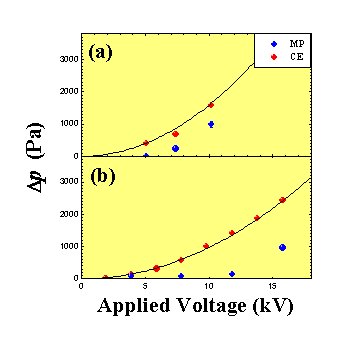 |
Fig. 4. Schematic crystal domain formations are drawn at each water concentration. Ellipsoidal shapes and a pair of parallelograms reveal conventional domains and twin-related ones, respectively. Characteristic twin-related domains appear inside the conventional domains at 0.9 mol pct. |
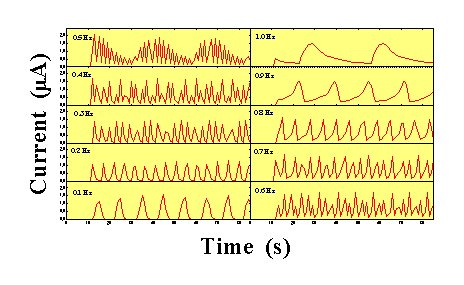 |
Fig. 5. dc voltage dependence of static pressure Dp for (a) flat-type electrodes and (b) cone-shaped electrodes. The gap between electrodes, Z, is fixed at 2 mm. In both shapes of electrodes, pressure in the case of using the chemical etching (CE) surface becomes higher than in the case of using the mechanical polishing (MP) surface. CE and MP are regarded as smooth and rough surfaces, respectively. |
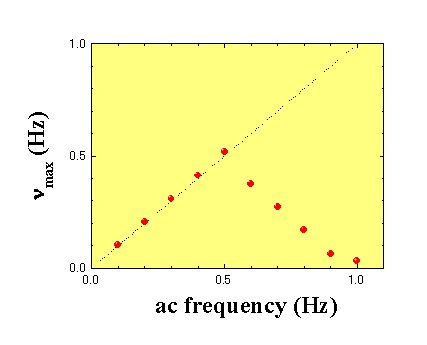 |
Fig. 6. Frequency of oscillation current, nyu, under ac electric fields, f. The frequency of oscillating components is calculated by Fourier transform of the observed current (Fig. 5). nyu changes markedly at f = 0.5 Hz. |
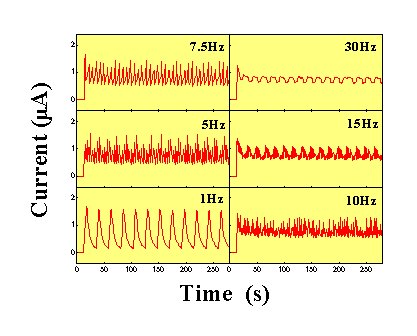 |
Fig. 7. Time dependence of electric currents for smooth-surface electrodes at 1 < f <30 Hz. The electrodes are flat. The ac voltage is fixed at 10.2 kV and the electrode gap is 2 mm. At 10 Hz, rhythmic current oscillation is not observed. Above 10 Hz, rhythmic oscillations appear again, but oscillation components are quite different from those below 10 Hz. Longer periodic and weak modulations are dominant above 10 Hz. |
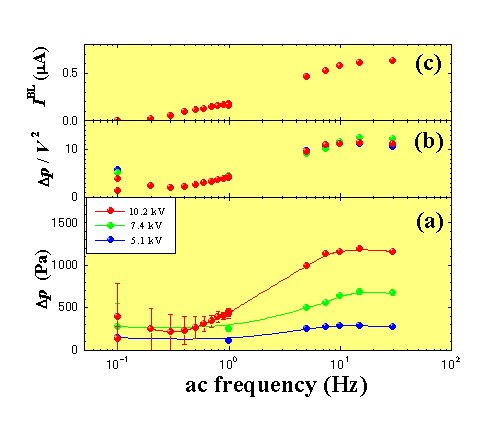 |
Fig. 8 ac frequency dependence of (a) pressure, (b) pressure scaled by V2, and (c) baseline current. A combination of flat-type electrodes and smooth surface is selected, where the electrode gap is 2 mm. The baseline current at 10.2 kV is proportional to pressure as a function of ac frequency. |
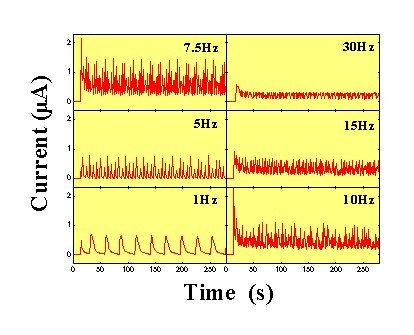 |
Fig. 9 Current as a function of time and ac frequency for rough-surface electrodes. Flat-type electrodes are used, where the ac voltage and electrode gap are fixed at 10.2 kV and 2 mm, respectively. At 10 Hz, rhythmic current oscillation disappears completely. In contrast to the smooth surface, rhythmic oscillations never appear again above 10Hz. |
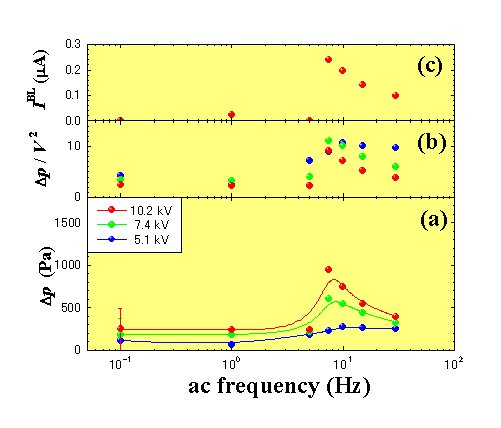 |
Fig. 10 ac frequency dependence of (a) pressure, (b) pressure scaled by V2, and (c) baseline current. A combination of flat-type electrodes and rough surface is selected, where the electrode gap is 2 mm. The baseline current at 10.2 kV is proportional to pressure as a function of ac frequency. |
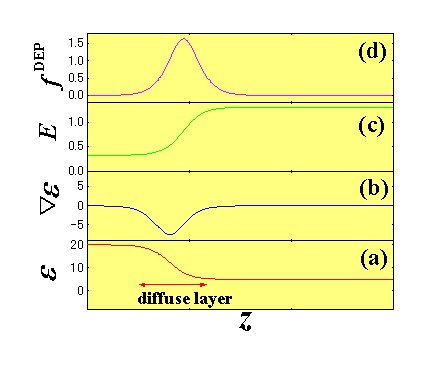 |
Fig. 11 (a) Dielectric constant e, (b) gradient of the dielectric constant De, (c) electric field E, and (d) the dielectrophoretic force f DEP, near electrode. Around the diffuse layer, a gradual increase in dielectric constant is caused by molecular orientational order or conformational changes. |
References
2) J.-H. Huh, Y. Yusuf, Y. Hidaka, and S. Kai: Phys. Rev. E 66 (2002) 031705.
3) J.-H. Huh and S. Kai: Phys. Rev. E 68 (2003) 042702.
4) T. John and R. Stannarius: Phys. Rev. E 70 (2004) 025202.
5) T. T. Katona and J. T. Gleeson: Phys. Rev. E 69 (2004) 016302.
6) W. D. Ristenpart, I. A. Aksay, and D. A. Saville: Phys. Rev. Lett. 90 (2003) 128303.
7) W. D. Ristenpart, I. A. Aksay, and D. A. Saville: Phys. Rev. E 69 (2004) 021405.
8) A. Yethiraj and A. Blaaderen: Nature (London) 421 (2003) 513.
9) K.-Q. Zhang and X. Y. Liu: Nature (London) 429 (2004) 739.
10) J. Darabi, M. Rada, M. Ohadi, and J. Lawler: J. Microelectromech. Syst. 11 (2002) 684.
11) J. Darabi and K. Ekula: Microelectron. J. 34 (2003) 1067.
12) J. Darabi and H. Wang: J. Microelectromech. Syst. 14 (2005) 747.
13) W. Helfrich: J. Chem. Phys. 51 (1969) 4092.
14) B. P. Cahill, L. J. Heyderman, J. Gobrecht, and A. Stemmer: Phys. Rev. E 70 (2004) 036305.
15) N. A. Mortensen, L. H. Olesen, L. Belmon, and H. Bruus: Phys. Rev. E 71 (2005) 056306.
16) O. M. Stuetzer: J. Appl. Phys. 30 (1959) 984.
17) W. F. Pickard: J. Appl. Phys. 34 (1963) 246.
18) J. Darabi, M. M. Ohadi, and D. DeVoe: J. Microelctromech. Syst. 10 (2001) 98.
19) J. R. Melcher: Continuum Electromechanics (MIT Press, Cambridge, MA, 1981).
20) H. Haken: Synergetics-An Introduction, Nonequilibrium Phase Transition and Self-Organization in Physics, Chemistry and Biology (Springer, Heidelberg, 1978).
21) Y. Kuramoto: Chemical Oscillations, Waves, and Turbulence (Springer, New York, 1984).
National Defense Academy
Last Modified: April 1, 2009
